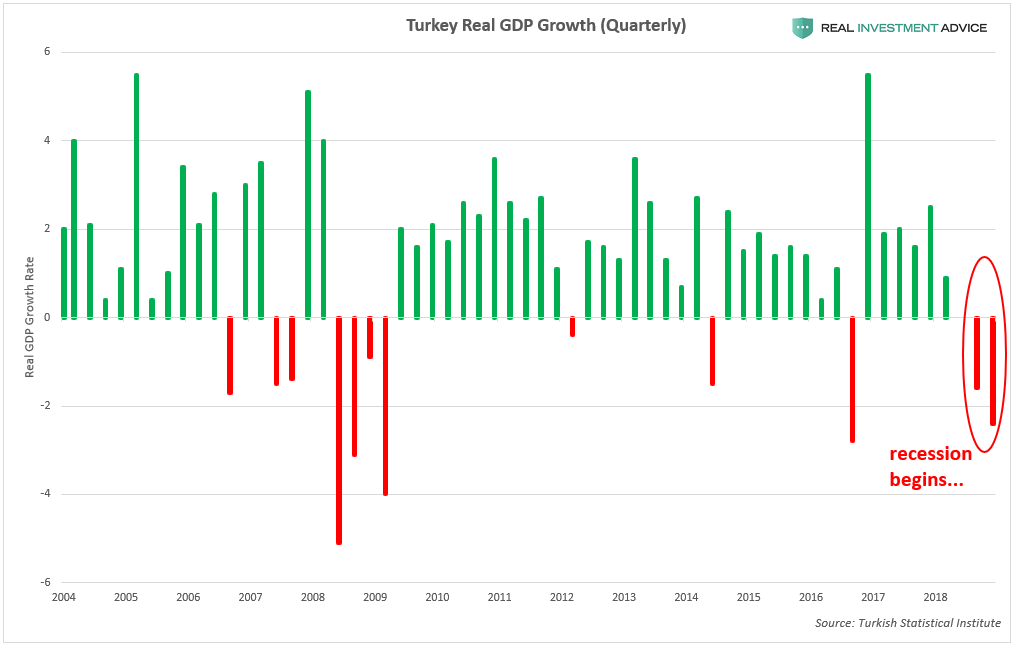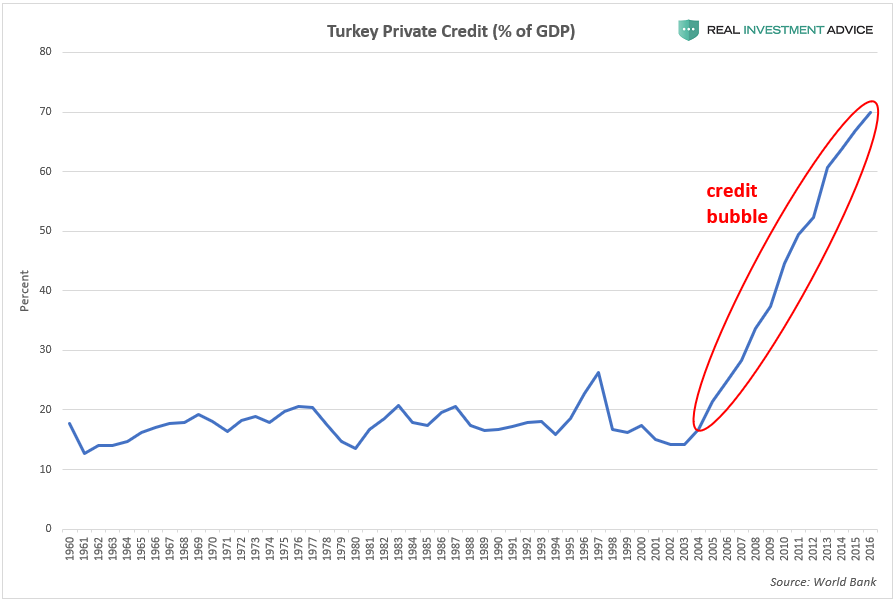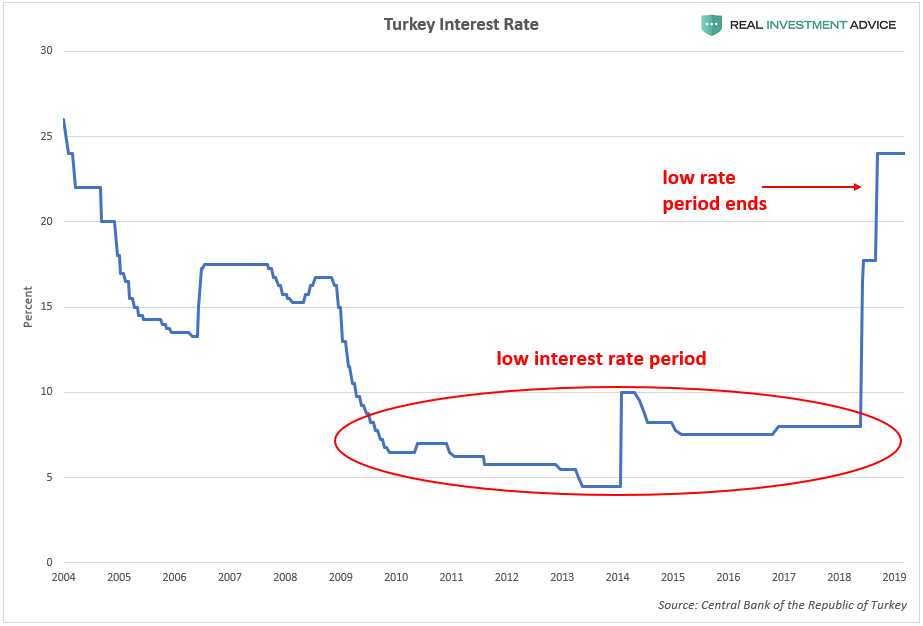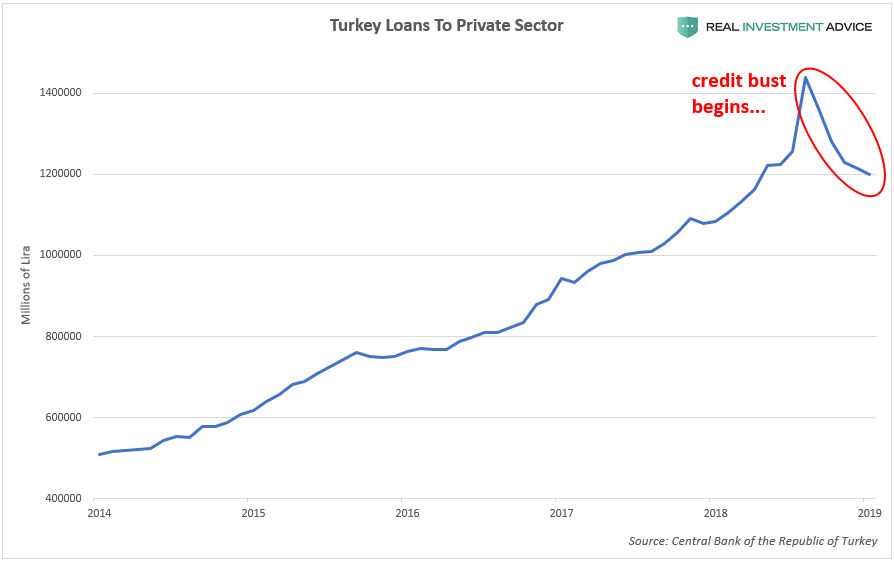Turkey’s Recession And Credit Bust Just Started
For the first time since the Global Financial Crisis, Turkey has officially entered a recession after GDP fell 2.4% in the fourth quarter of 2018 and 1.6% in the third quarter. Turkey’s economic contraction is the result of the sharp decline of the lira currency, aggressive interest rate hikes, and a credit bust that is just getting started. Turkey’s nascent recession and credit bust are symptoms of the bursting of an economic bubble that I’ve been warning about for the past several years.
(Click on image to enlarge)

To summarize my warnings, a credit bubble formed in Turkey starting in the early-2000s, which led to an artificial economic boom. Private sector credit grew from roughly 15% of GDP in 2003 to 70% of GDP in 2016. Loans to the private sector sextupled from 2010 to 2018. This credit bubble was the result of record low interest rates, which made it much cheaper to borrow.
(Click on image to enlarge)

The chart below shows how interest rates remained at record low levels from 2009 to 2018. The decline of Turkey’s currency necessitated raising interest rates to shore up the currency. Unfortunately, as I explained in Forbes, high interest rates cause credit bubbles to burst, which then results in an economic contraction.

Since August, Turkey has been experiencing a credit bust:

Turkey’s recession and credit bust are only in their infancy, I’m afraid. Turkey has had a tremendous debt-fueled economic boom over the past fifteen years and is about to experience the hangover.
For the author's full disclosure policy, click here.



